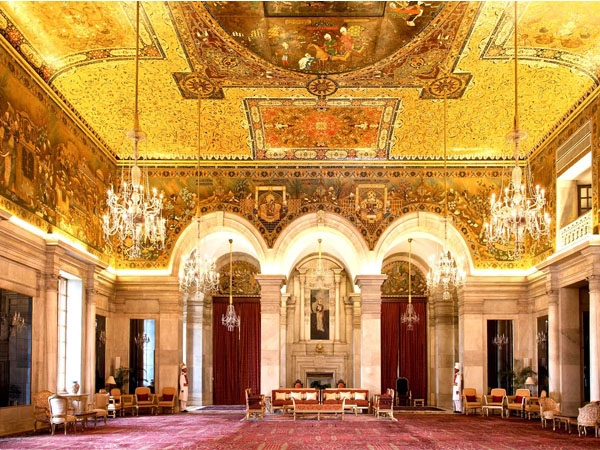Visit what belongs to you! Plan a visit to epitome of India’s strength Rashtrapati Bhavan
New Delhi, January 7: If you want to know India better, now there is a golden opportunity. The epithet of our nation, Rashtrapati Bhavan is not anymore a mystery to common people. The splendor of the institution can now be witnessed from within. Make any day free from last four days of the week and book your tour.

This vast mansion has got four floors and 340 rooms. With a floor area of 200, 000 square feet it is built by using 700 million bricks and three million cubic feet of stone. Hardly any steel has gone into the construction of the building.
![]() The journey through this work of art is divided into three circuits. Circuit 1 covers the Main Building and Central Lawn of Rashtrapati Bhavan including its premier rooms like the Ashok Hall, Durbar Hall, Banquet Hall, its Drawing Rooms and many more. Circuit 2 consists of the tour of the Rashtrapati Bhavan Museum Complex, while Circuit 3 promises the tour of Rashtrapati Bhavan’s famous gardens- The Mughal Gardens, Herbal Garden, Musical Garden and Spiritual Garden.
The journey through this work of art is divided into three circuits. Circuit 1 covers the Main Building and Central Lawn of Rashtrapati Bhavan including its premier rooms like the Ashok Hall, Durbar Hall, Banquet Hall, its Drawing Rooms and many more. Circuit 2 consists of the tour of the Rashtrapati Bhavan Museum Complex, while Circuit 3 promises the tour of Rashtrapati Bhavan’s famous gardens- The Mughal Gardens, Herbal Garden, Musical Garden and Spiritual Garden.
Another important aspect of this highly significant mansion is that it nurtures a rich biodiversity. To raise concern about mother nature, a nature trail spread over 75 acres has been developed. The main features of the nature trail are the pond ecosystem, butterfly corner, ber groove, mango orchard, peacock point, orangery, the forest ecosystem, the mica point amongst others. Hundred and thirty-six wild and cultivated plant species and eighty-four animals have been sighted along the trail.





